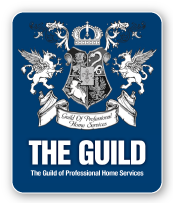

Radon Mitigation and Radon Testing Facts
How Radon Enters the House
Radon is a naturally occurring radioactive gas produced by the breakdown of uranium in soil, rock, and water. Air pressure inside your home is usually lower than pressure in the soil around your home's foundation. Because of this difference in pressure, your house acts like a vacuum, drawing radon in through foundation cracks and other openings. Radon may also be present in well water and can be released into the air in your home when water is used for showering and other household uses. In most cases, radon entering the home through water is a small risk compared with radon entering your home from the soil.
Reduce Radon Levels In Your Home
Radon is the second leading cause of lung cancer. The Surgeon General and the EPA recommend radon testing and radon mitigation or radon reduction in homes that have high levels. Fix your home if your radon level is confirmed to be 4 picocuries per liter (pCi/L) or higher. Radon levels less than 4 pCi/L still pose a risk, and in many cases may be reduced.
Radon is a Cancer-causing, Radioactive Gas
Radon is estimated to cause many thousands of lung cancer deaths each year. Only smoking causes more lung cancer deaths. If you smoke and your home has high radon levels, your risk of lung cancer is especially high.
The Surgeon General has warned that radon is the second leading cause of lung cancer in the U.S.
 Selecting a Radon Testing Kit
Selecting a Radon Testing Kit
Since you cannot see or smell radon, special equipment is needed to detect it. Active radon testing provides hourly readings and an average result for the test period. The amount of radon in the air is measured in "picocuries of radon per liter of air," or "pCi/L". The recommended action level set by the EPA is 4.0 pCi/L. Any radon test above this and further action or active radon mitigation is recommended.
Radon Reduction Techniques Work
Radon reduction systems work. Some radon reduction systems can reduce radon levels in your home by up to 99%. The cost of fixing a home generally ranges from $800 to $2500 (with an average cost of $1200). Your costs may vary depending on the size and design of your home and which radon reduction methods are needed. Hundreds of thousands of people have reduced radon levels in their homes.
The EPA encourages you to have a qualified radon mitigation contractor fix your home because lowering high radon levels requires specific technical knowledge and special skills. Without the proper equipment or technical knowledge, you could actually increase your radon level or create other potential hazards and additional costs. The EPA has followed the National Environmental Health Association's certification program and recommends mitigators who have successfully completed this program.
House to Home Services is certified in measurement and mitigation. We can provide you with professional testing and, if needed, effective radon mitigation. We utilize continuous monitors to test the levels of radon gas emanating in the homes. If the level comes back above 4.0 pCi/L, we can help you through the process of installing an active radon mitigation system. We will walk you through the mapping of your basement to determine the most effective and aesthetic location for your system. We provide a full warranty on the system and the craftsmanship.
Our team has over twenty years of working in home services areas from home inspecting to building. We work with you to develop a successful approach to mitigating the radon in your home. Let us work with you to ensure a safe environment in your home.
Please give us a call at 1-800-398-4677 or 262-696-4706.
 home
home
 contact
contact
 Brookfield Homemove
Brookfield Homemove


